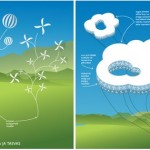The final text of the G20 summit of world leaders in Toronto which ended on Sunday contained mixed messages for wind energy. Here, we report on how the news travelled around the green community.
In a positive move, picked up by Business Green, the G20 reiterated a previous pledge to phase out expensive and inefficient fossil fuel subsidies – which are worth around $550 billion a year. The text said fossil fuel subsidies “encourage wasteful consumption”, adding that they will be phased out “over the medium term”. It also pledged to review progress on the phase out – which could cut global carbon emissions by around 7% according to the International Energy Agency – at upcoming summits, something which we too will be watching closely.
But the bad news for wind energy, reported by the Earth Times, came as the leaders of the G20 agreed to drop an earlier pledge to commit to investments in clean energy. In the final text, this was watered down to a “commitment to a green recovery and to sustainable global growth.”
According to the WWF blog, this is a substantial change from the Pittsburgh G20 summit in 2009 which contained eight references to ‘clean energy’. “They want through this document with a vacuum cleaner to remove any reference to clean energy,” Kim Carstensen, WWF climate expert, said.
References to investment in the fight against climate change were also weak – while the EU and Japan remained strong over their commitments to cut carbon, other countries wrangled over who should do how much, says WWF. Moreover, no initiatives were agreed on financial transaction taxes that could help fund the cost of climate change action in the world’s poorest countries. At the most, the final version of the text pledged to continue to support international climate change talks ahead of the upcoming UN summit in Mexico.
“The greenest thing about the G20 is its ability to reuse and recycle earlier commitments. This summit could have been the beginning of real action towards a clean, efficient and resilient economy but all we got is some nice words about green economy and a recycled statement on fossil fuel subsidies,” Carstensen said.







 Comments
Comments

